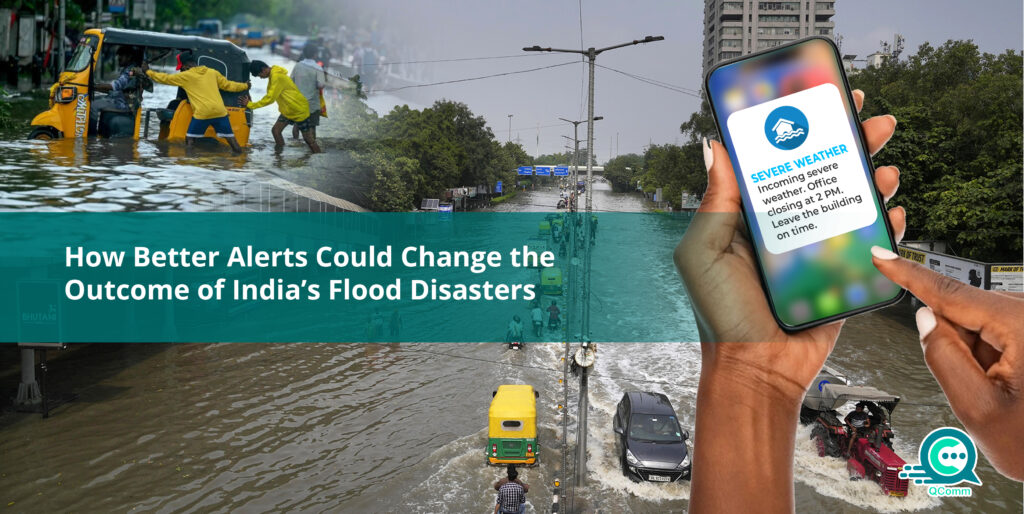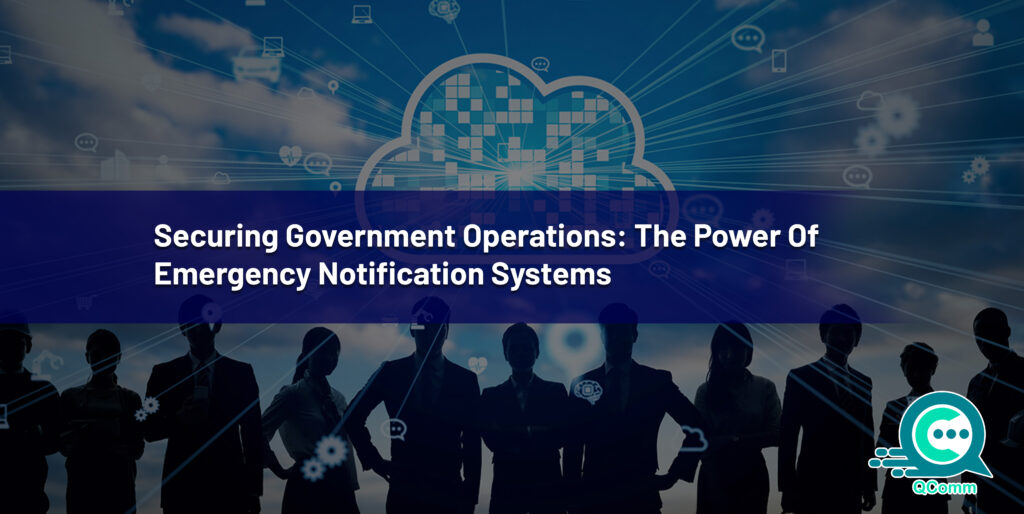
India’s flood warning systems often fail where they’re needed most—on the ground. Alerts from agencies like the CWC or IMD are sent through apps, websites, SMS, or sirens, but they often arrive too late or don’t reach the people who need them. In many areas, there’s limited access to early warning tools. Messages are delivered through disconnected channels, and when they do arrive, they often lack clear, actionable instructions.
Even in places with alert systems, internal communication gaps delay the response. Some wait for direction, others act on guesswork, and many miss the alert entirely. To change outcomes, alert systems must go beyond broadcasting—they need to send real-time, targeted messages with clear next steps to the right people, at the right time.
How Delays in Alerts Make Disasters Worse
Every minute lost during a flood emergency increases the damage. Whether it’s human life, critical infrastructure, or continuity of operations—time directly affects the outcome. In India, several major flood disasters have shown how poor alert systems and weak internal communication can make a bad situation worse.
Case 1: Bihar, 2021 – Alerts Sent, But Not Received in Time
In July 2021, heavy rains caused the Kosi and Bagmati rivers to overflow in Bihar, but flood warnings from the Central Water Commission reached district officials too late. Villagers in Sitamarhi and Darbhanga began evacuating on their own before rescue teams arrived, as alerts were delayed and roads became impassable. With no structured system to confirm receipt or action, local officials relied on phone calls and WhatsApp messages, making quick coordination impossible and exposing serious gaps in real-time emergency communication.
Case 2: Chennai, 2015 – Communication Collapse During a Citywide Crisis
The 2015 Chennai floods, caused by record-breaking rainfall, led to over 500 deaths and widespread infrastructure failure. Although the IMD issued warnings, poor internal communication within government offices and private businesses meant many didn’t act in time. Key facilities like airports and hospitals stayed open too long due to the absence of clear evacuation instructions. Several companies lacked crisis management strategies or tools for centralized updates, leaving employees stranded without support. The National Disaster Management Authority later confirmed that delays in rescue efforts were largely due to uncoordinated communication between agencies and response teams.
Case 3: Local Offices in Uttarakhand, 2023 – Disconnected from Central Alerts
During the 2023 flash floods in Uttarakhand, satellite systems did send automated alerts, but field officers lacked the tools to access or share them properly. Many relied on outdated SMS systems that couldn’t support images or maps. With no tested crisis management plan in place, staff were unclear about reporting lines or next steps, leading to confusion, missed updates, and duplicated efforts in the critical first 48 hours.
The Common Pattern
Across past flood disasters, the same failures repeated: alerts didn’t reach field teams in time, communication broke down between departments, and no one could track who had seen or followed the warnings. This shows why flood response needs more than just alerts—it needs real-time internal messaging, delivery tracking, and team-specific instructions that reach everyone simultaneously, from facilities to HR to field staff.
What Better Alerts Look Like
A good flood alert isn’t just fast—it must be specific, targeted, and trackable. One message to everyone doesn’t work when different teams need different actions. A frontline engineer doesn’t need the same instructions as an HR lead or a logistics manager.
To prevent confusion, flood preparedness communication systems must go beyond sending alerts. They should:
Deliver in real time across devices
Messages should reach people within seconds via multiple channels—app push, desktop alerts, SMS, even digital signage. If one method fails, another takes over.
Send role-based instructions
Each crisis team has its own tasks. The system should group recipients—like security, IT, or transport—and send tailored instructions. This keeps teams focused and avoids overload.
Track who’s read and responded
Modern systems show which alerts were seen and who acted. If 60% of a team hasn’t read a flood alert, managers can follow up immediately. This is key for workplace safety and coordination.
Allow two-way updates and escalation
Alerts should support responses—status updates, help requests, or feedback. If someone doesn’t respond, the system should escalate to their backup. That keeps operations moving.
Include ready-to-send templates
No one has time to draft messages during a flood. Pre-set templates for evacuations, outages, or alerts save time and reduce errors.
Early warning tools should drive action, not just awareness. Whether it’s a continuity lead, safety officer, or field manager, the right system helps them move fast and stay organized.
The tools exist—the challenge is using them the right way.
What Needs to Happen Next
Better alerts don’t just show up. To change how flood disasters unfold, both public agencies and private organizations need to fix two things: how alerts are triggered and how they’re shared inside.
Most delays happen because people don’t know their role or get different versions of the same message. A clear plan with role-based instructions, decision flows, and backup contacts makes response faster and cleaner.
Flood data from sources like IMD and CWC is already there—but barely used. Internal systems should pull this data directly and route alerts to the right teams without manual effort.
Plans only work if people know how to follow them. Regular drills and test alerts help teams spot weak spots before the real thing hits. And during a flood, leadership can’t be figuring things out—they need to act on what’s already set.
Internal alerts can’t be an afterthought. Like fire drills, they should be required. When the water rises, no one should be stuck waiting to hear what comes next.
Frequently Asked Questions
What’s the biggest problem with current flood alerts in India?
Most alerts don’t reach the right people at the right time. Central systems like IMD and CWC do issue flood warnings, but the delivery often breaks down at the local or organizational level. Messages are either delayed, ignored, or lack enough detail to prompt action.
Why is internal communication so critical during floods?
Internal communication is the bridge between an external alert and an internal response. Without clear direction, teams don’t evacuate, supplies stay unused, and operations collapse. Good internal messaging tells people what to do, who’s in charge, and when to act.
How do you keep employees informed if the internet or power goes out?
Use tools that support offline alerts like SMS backups or push notifications with failover. Also, set up digital signage for crisis alerts in critical areas and maintain radio or satellite-based alternatives for rural or high-risk regions.
How often should flood response plans be tested?
Plans should be tested at least twice a year. Mock drills and live message simulations help teams act faster, reduce confusion, and spot weaknesses in the communication chain.
Conclusion
Floods don’t wait. Your alerts shouldn’t either
Across India, disasters unfold not because warnings aren’t issued—but because the response breaks down inside. Messages get lost. Teams don’t move. Actions are delayed.
That gap can be fixed.
- Design your communication with the flood in mind
- Equip every role with clear, instant directions
- Use tools that confirm message delivery and action
- Test the system before you need it
The smartest alert system isn’t the one that sounds loudest—it’s the one people follow.
If your current setup can’t promise that, it’s time to rethink what ‘ready’ really means.


